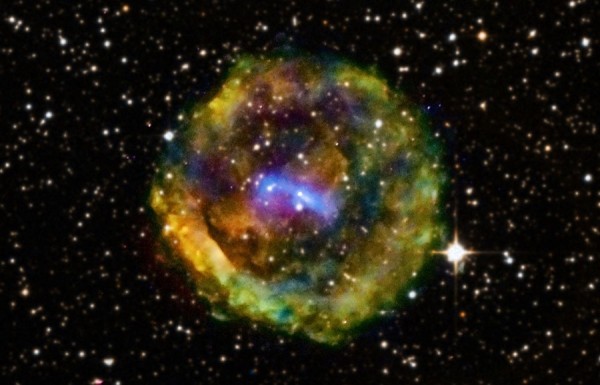By Ana Verayo, | February 18, 2017

The remains of an ancient supernova: a previously ejected gas cloud is hot and light, here in the mist SNR G11.2-0.3 at the heart of our galaxy, 16,000 light years from Earth. (NASA/Chandra X-ray Obs)
For the first time, astronomers have discovered the earliest supernova explosion to date, just three hours after it exploded, revealing more clues about the first stage of supernova formation. This supernova is known as SN 2013fs.
"Our initial reaction to this supernova is that this phenomenon is truly unique than the rest of the supernovae," the lead author of the study, Ofer Yaron from the Weizmann Institute of Science in Israel, said. "More importantly, we managed to capture and observe this event when it was very young."
Like Us on Facebook
For a long time, scientists have been trying to figure out what exactly goes on during the initial stages when a dying, massive star explodes. However, it is almost next to impossible to predict when a supernova will occur since they are extremely rare and are at the least already a week old when most of its stellar debris have been ejected.
Yaron explained that a supernova could be seen for almost a year. However, its peak brightness can last from a week to several weeks. This newly discovered supernova is only a few hours old.
When a supernova explodes, its immense light can take seven million years or even a billion years to reach Earth. In this new study, the light of SN 2013fs was captured by an automated sky scan from the Palomar Observatory near San Diego, California. Otherwise, this light would have taken 160 million years before it can be seen.
This cosmic anomaly was spotted through telescope readings where astronomers and physicists were able to immediately focus their instruments to identify the distance, temperatures, properties, and other crucial factors of this baby supernova. Thanks to the W.M. Keck Observatory in Hawaii, astronomers were able to determine the light intensity including NASA's Swift satellite that was able to detect ultraviolet and X-ray levels.
To construct this image just moments after the star's brilliant death, the team collected data of this dazzling event. Since this was captured so early, scientists were able to observe a dense shell enshrouding the dying star.
Scientists suggest that this star would have been a red supergiant based on their observations of the initial explosion. Also, the team considers this is a regular type of supernova and that instabilities can be common in massive stars which are exploding. Yaron said that if there are these instabilities in the first few months of the explosion, it would mean that supernova explosion models should be updated.
This new study was published in the journal, Nature Physics.
-
Use of Coronavirus Pandemic Drones Raises Privacy Concerns: Drones Spread Fear, Local Officials Say

-
Coronavirus Hampers The Delivery Of Lockheed Martin F-35 Stealth Fighters For 2020

-
Instagram Speeds Up Plans to Add Account Memorialization Feature Due to COVID-19 Deaths

-
NASA: Perseverance Plans to Bring 'Mars Rock' to Earth in 2031

-
600 Dead And 3,000 In The Hospital as Iranians Believed Drinking High-Concentrations of Alcohol Can Cure The Coronavirus

-
600 Dead And 3,000 In The Hospital as Iranians Believed Drinking High-Concentrations of Alcohol Can Cure The Coronavirus

-
COVID-19: Doctors, Nurses Use Virtual Reality to Learn New Skills in Treating Coronavirus Patients







